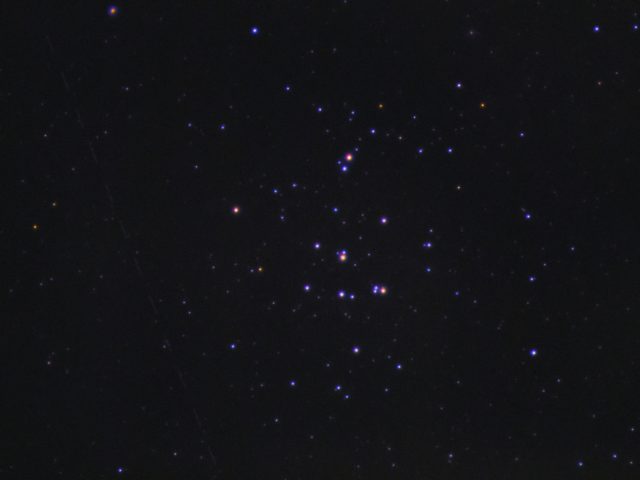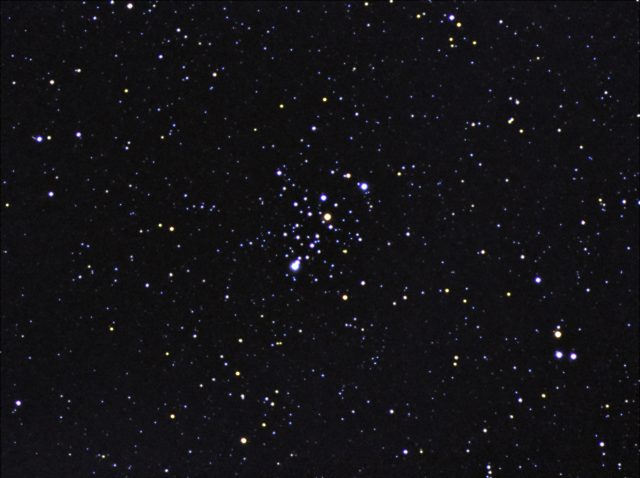
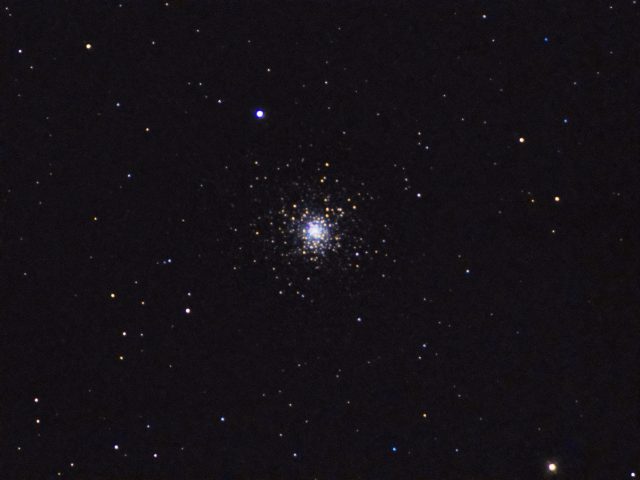
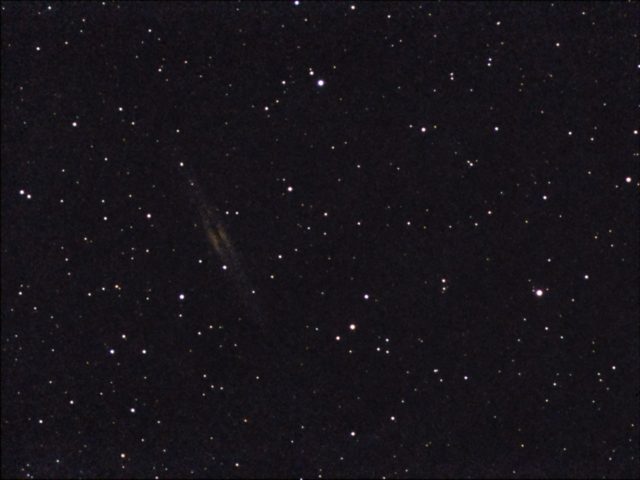
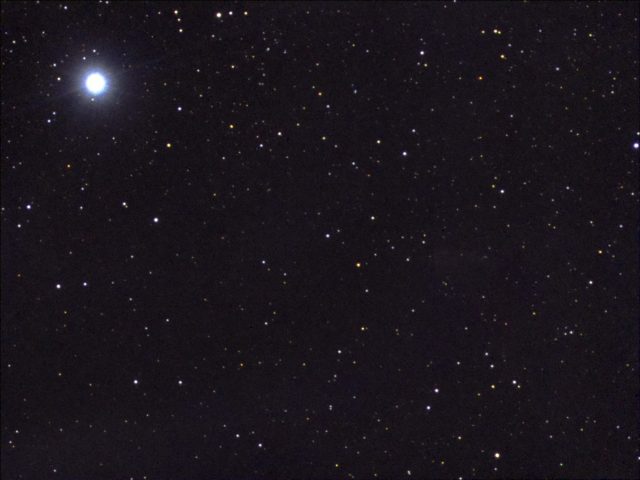
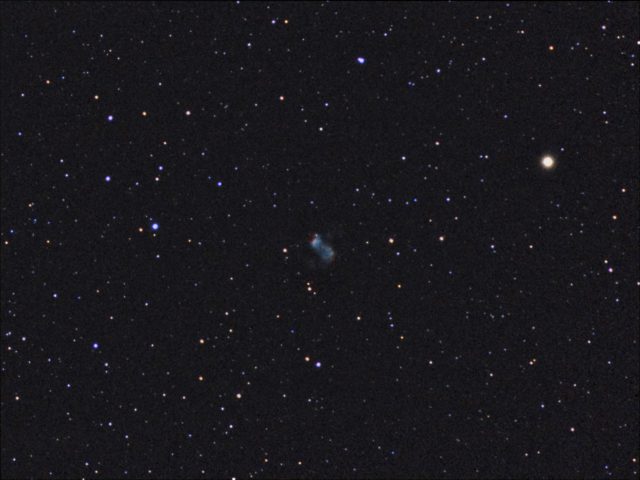
Here is a roundup of objects I was able to see during my most recent Electronically Assisted Astronomy (EAA) observing session. These were taken in a Bortle Red zone and under a nearly full moon on Dec 1, 2017.





Here is a roundup of objects I was able to see during my most recent Electronically Assisted Astronomy (EAA) observing session. These were taken in a Bortle Red zone and under a nearly full moon on Dec 1, 2017.
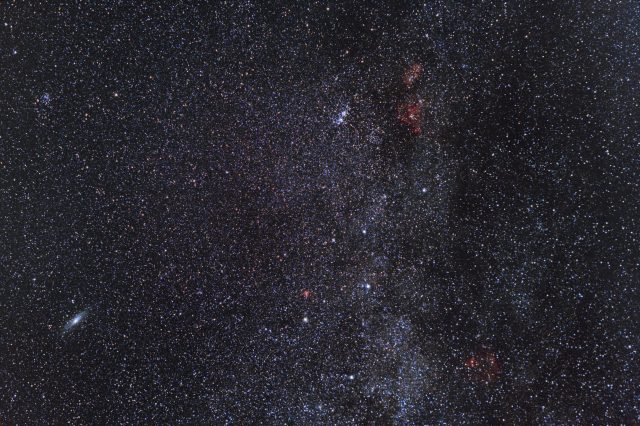
By luck I framed this one with M31 and the Cassiopeia region and got all the good nebulae that were in the area to boot. You can see the Heart and Soul Nebulae, the PacMan Nebula, emission nebula NGC 7822, and other smaller nebulae like the one near Gamma Cass. The Double Cluster is there along with lots of other open clusters.
It is not the best lens and I did do some distortion correction in PS. It was a little difficult to process since this was the first time I used the Astronomik CLS filter. Before, I had one light pollution filter and two cameras, so I finally got another one so they both have one. All I need now is a small mount for light loads like the setup I used here and I could get two cameras going at the same time. Yeah, buddy! 🙂
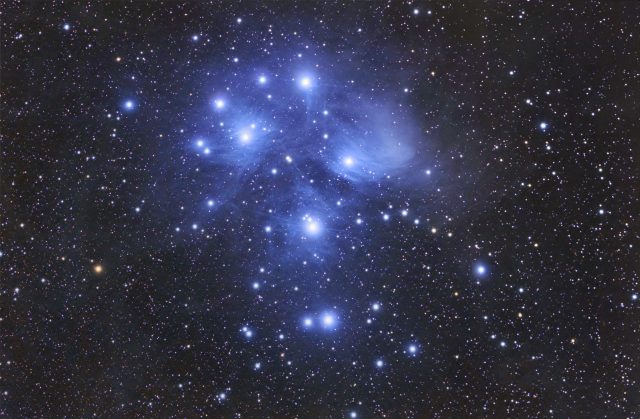
I took the very good Feb 2017 version of M45 and combined it with 3 other good images taken with the same scope as far back as 2011. I still have more that I can add to it, but for now this will do.
Not satisfied with the first version above, I worked up a darker version with more contrast and noise reduction.
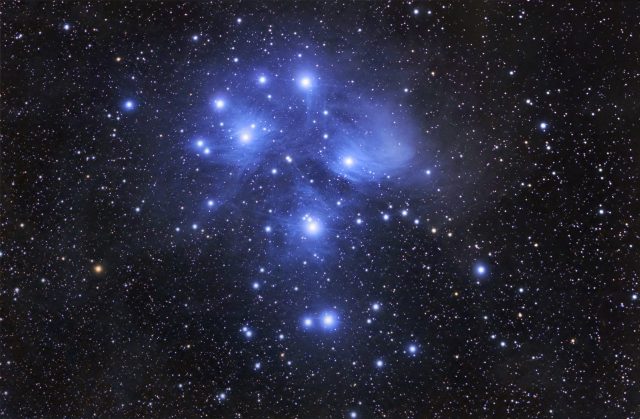
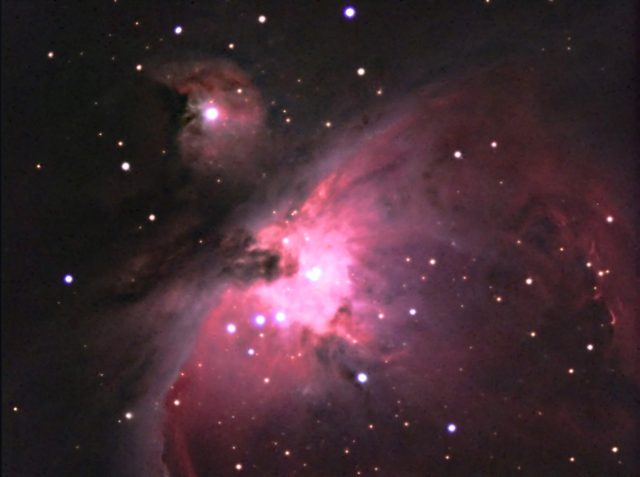
It was Friday, March 3, 2017 and the weather was iffy for imaging at my dark sky location. So, I decided to stay in town and try some short-exposure imaging with the Toupcam color planetary/guider cam I have.
I also wanted to try out an adapter I purchased for the Orion Star Shoot so that it can work with the Orion Ultra-Mini, 130mm, F/4.3 guider scope I’ve been using. This worked better with PHD2 than I thought it would. It seemed more accurate than the Toupcam with less dropped frames. In fact, I’ll probably leave this as the permanent guider setup.
For the Toupcam, I used a two inch extension on the TV-85 at F/7, but I still had to let the cam and extension hang halfway out the focuser to even reach focus. But, it was stable enough to try some simple targets like the Orion Nebula.
I used a software program called SharpCap for acquisition, dark subtraction and stacking. It worked well enough for M42, but it had trouble with stacking dimmer objects like M46, an open cluster with plenty of stars in it. I used IRIS to stack the individual frames manually for that one.
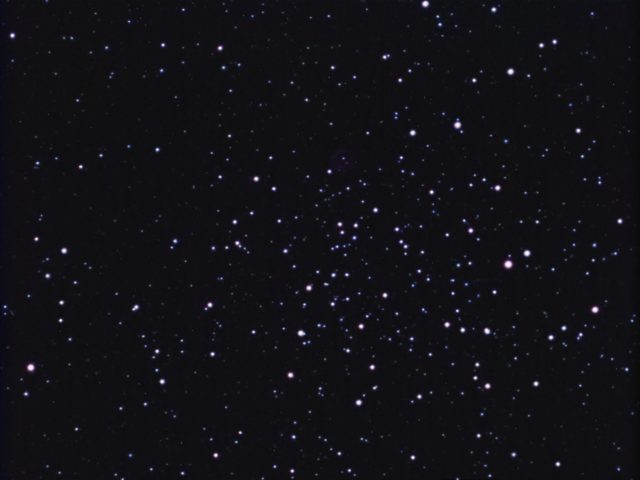
The last two images were tests of a relatively dim galaxies, like NGC 4565 and M64. I only got 16 frames for NGC 4565, so it is not too special. But, it shows the galaxy well enough to recognize what it is. Like the previous image, it was also stacked manually in IRIS.
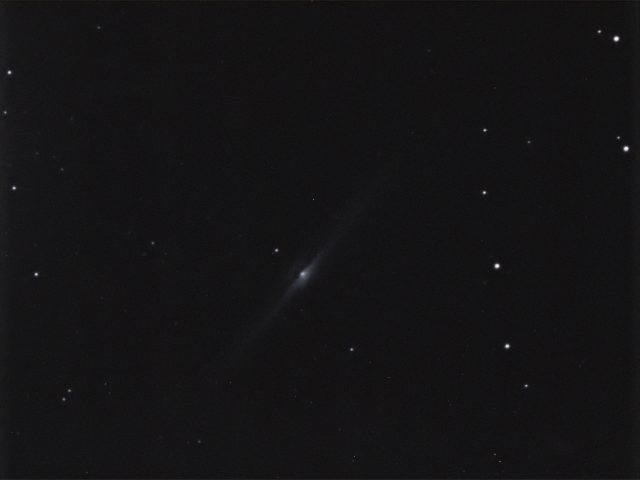
For my M64 dim galaxy test, I accumulated 38 frames @ 8 sec each. It was also a test of using a video file format called .SER that was designed for astronomical imaging. It is like a video file. After I downloaded a SER viewer/player, which also let me export the frames out as TIF format, I was able to bring the data into IRIS and stack.
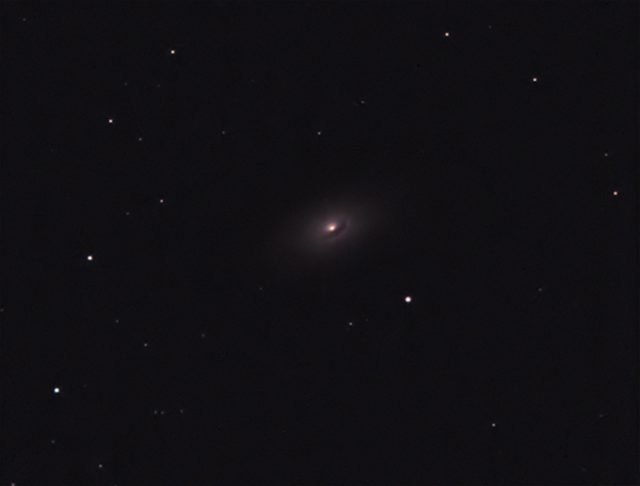
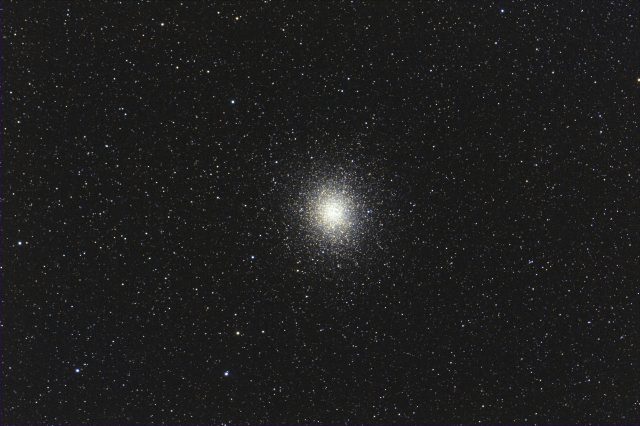
I really didn’t have time to shoot this like it should. But, I just had to get a minimum of 3 shots of it since I could see it with my naked eye. It was calling me. lol
Later, I reworked the image to bring out more of the blues in terms of color balance:
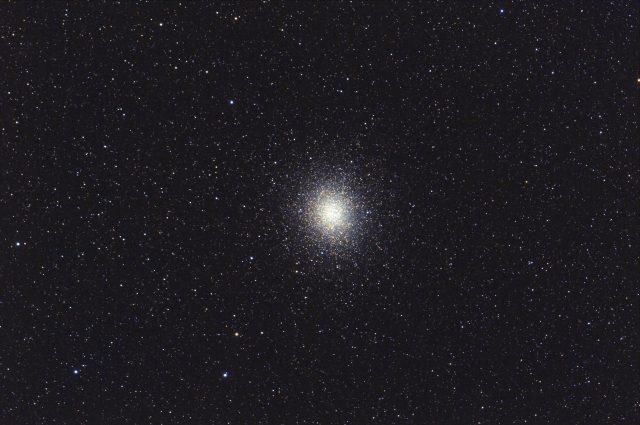
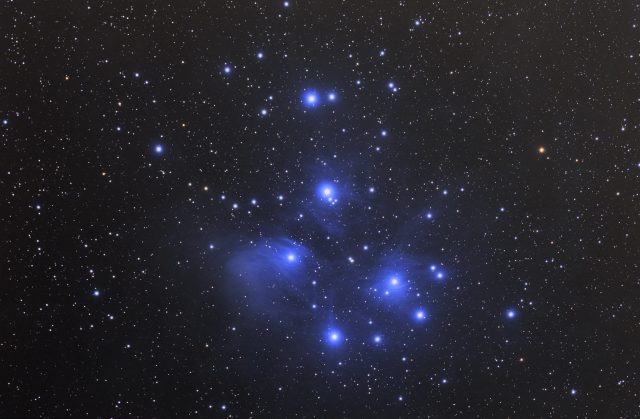
It was a beautiful evening and I just had to shoot the Pleiades (M45) from my new dark sky site. They just looked too good from there.
I wanted see how much I could pick up with the unmodified Canon T3. It is definitely a camera that is sensitive to blues and cyan. It does comets and galaxies well enough. It is not as good as a modified camera on nebulae, unless its a reflection nebula like M45.
This is about 2.58 hours of integration – about the minimum needed to bring out that faint background nebulousity I’ve always tried to get. It is difficult to decern the true background if there are any gradients, unfortunately. There were a some here and I tried my best to minimize them. Towards the end of the set, M45 moved into the muck and a little LP from a small neighborhood to my northwest. Plus, the zodiacal light was contributing a gradient, too. It was interesting to see that, though. 🙂
Below is the normal orientation for M45 with some noise reduction thrown in. I didn’t do any to the first image. That was pretty much how it came out after stacking.
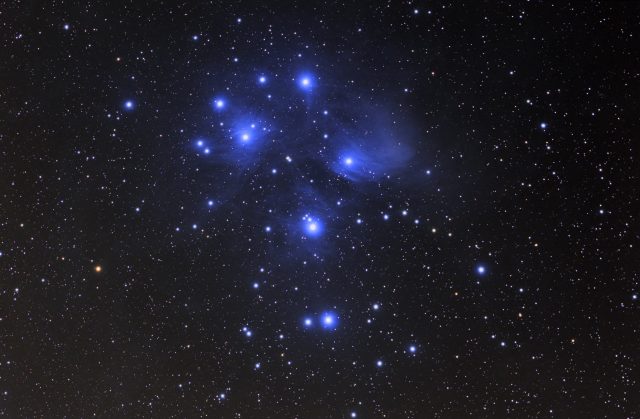
And finally, the gaudy, maxed out version:
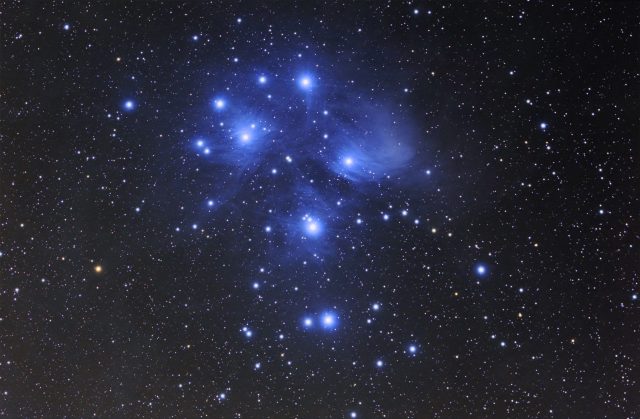
🙂
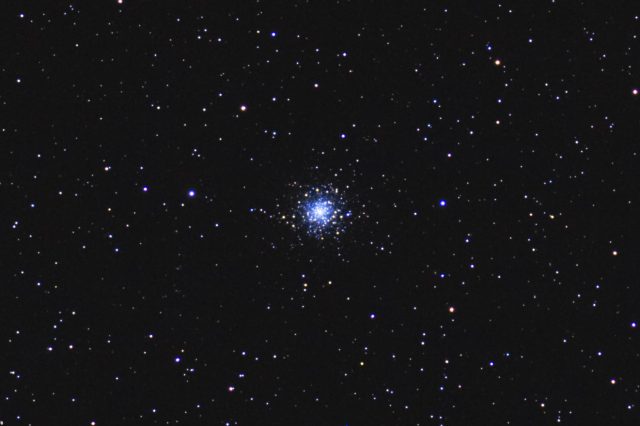
M79 is one of those globulars that sometimes gets glossed over for all the goodies in Orion, which is right above Lepus. I can’t remember shooting it in the past, but I may have something on it that I just don’t quite know where or when.
Update:
I found it. 10 years ago in Januarly of 2007 I shot it with an 8 inch, F/4 Schmidt-Newtonian. Here’s the combined data from that with this shot:
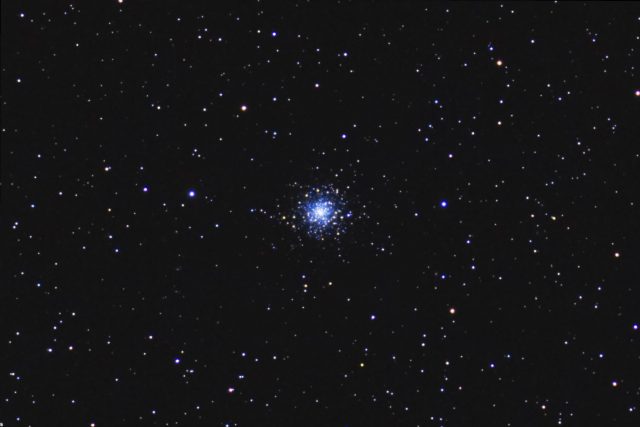
This is a 100% crop of the central area of the frame. It lies in a field that is full of faint fuzzies, including NGC 1886, which is like a miniature version of famous edge-on galaxies NGC 4565 or NGC 891. It got cropped out in this view, unfortunately.
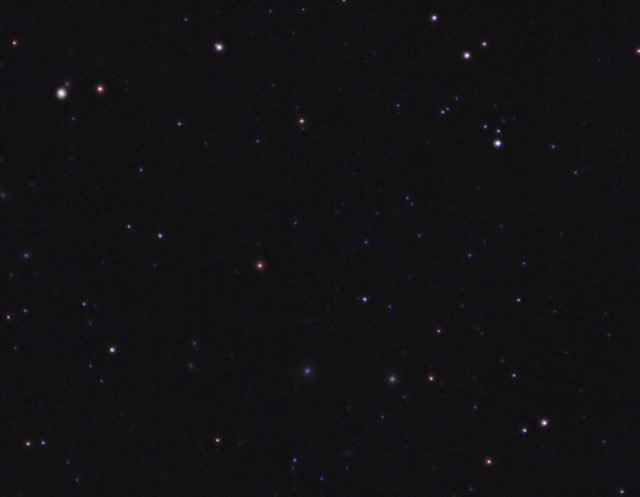
Here is another one of those experiments I do. LoL. This time it was with a software program called SharpCap. It can capture images from planetary/guider cameras like the Touptek, ASI or ZWO cameras. Sharpcap’s claim to fame is the ability to stack the images you take on the fly so that you can almost get a “live-view” like experience. I thought it was neat and easy to use.
This is only 7.5 minutes worth of exposure, so it is not really that deep. But, it is interesting to be able to get this much with an under $200 camera and a small finder scope.
I also captured 7 x 15 sec exposures of M13 in a live stack. Not quite enough data in the stack for good star colors with just 1.75 minutes of exposure , unfortunately. But, it shows the globular well enough. Check it out:
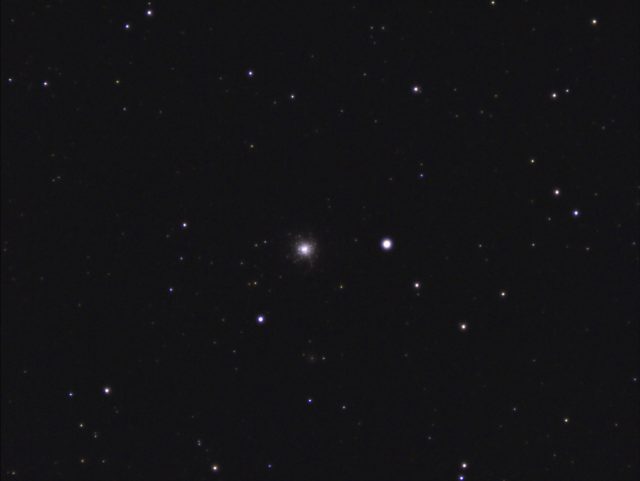
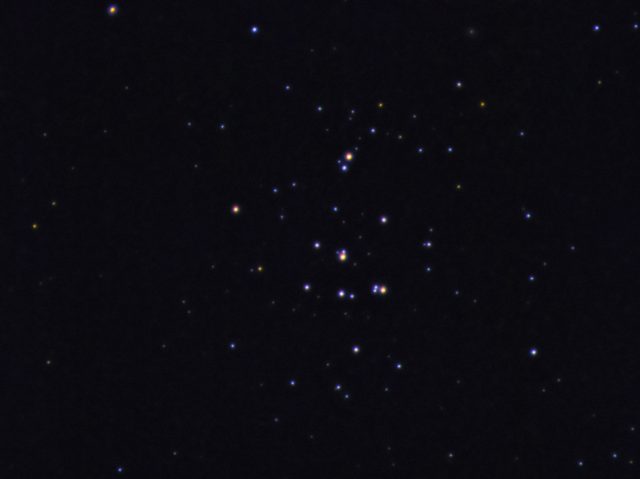
Here’s something I’ve been wanting to try. I used my new guidescope and color guide camera combo to take images of the Beehive in Cancer. It looked great on the screen with 5 second exposures.
I used the ToupSky capture software, which shoots continuous frames and saves each frame in an AVI movie file. Then, I imported the AVI file into IRIS and treated the data like I was processing a planetary image. It worked great and it was fast to process, too.
Color balance could be better, but I think I can fix that before I start recording by tweaking the settings in the ToupSky software. Now that I know it can be done, I’ll probably try this again the next time the weather is clear.
For fun, I combined the above image with one taken with my TV-85 back in 2015. Check it out:
